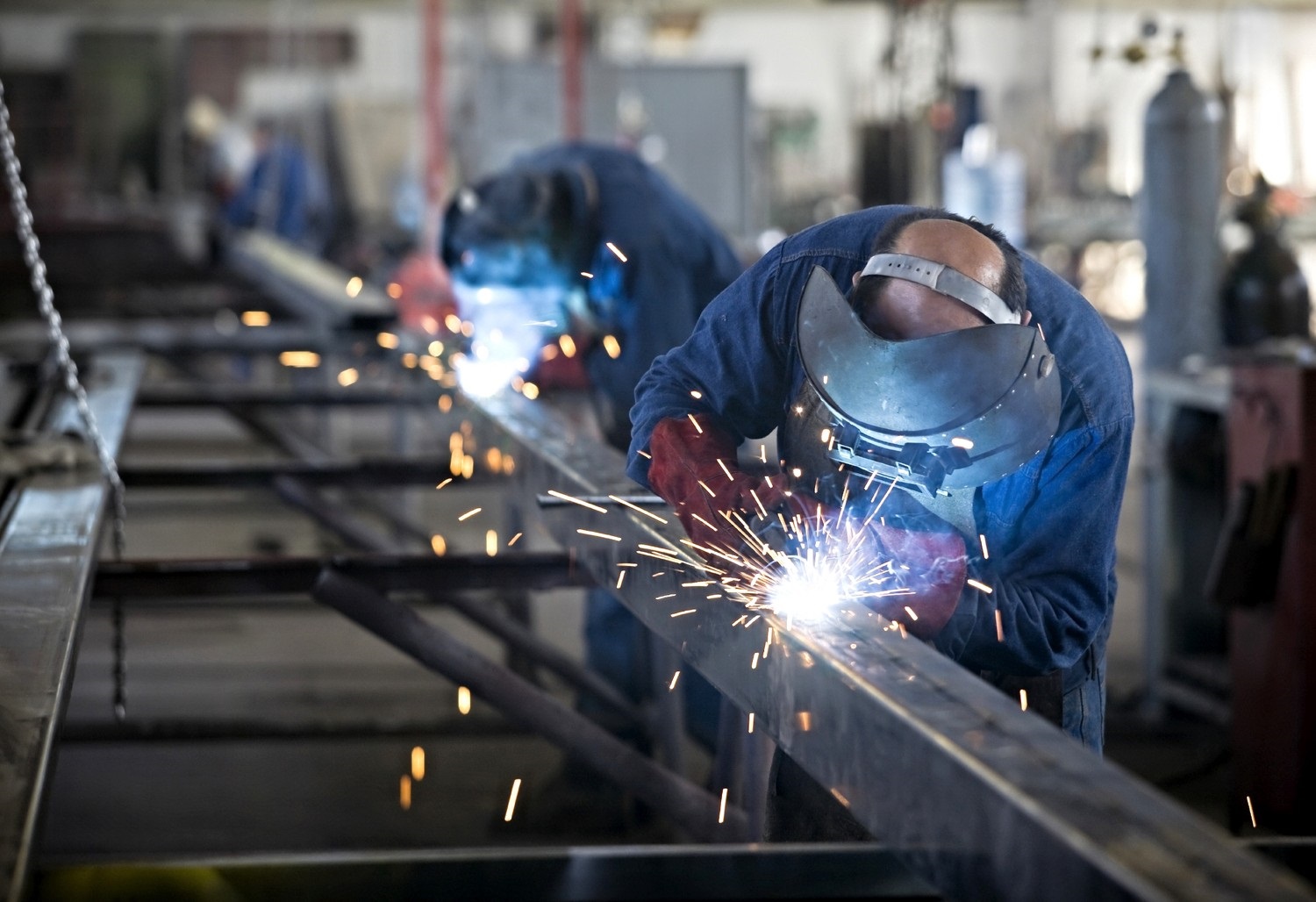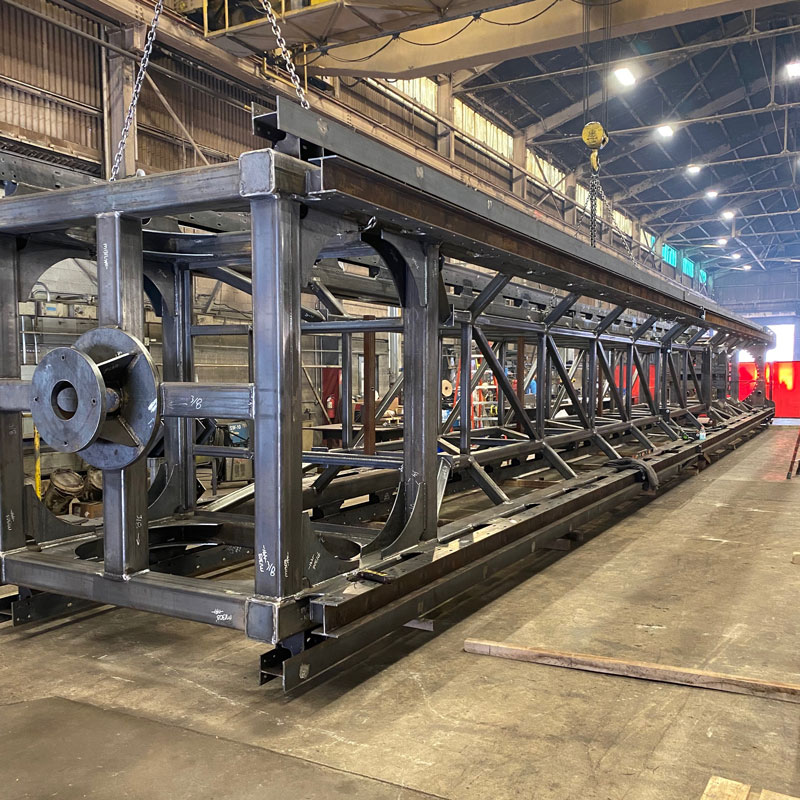Why Alpha Reo Is the Top Choice for Steel Reinforcement
Why Alpha Reo Is the Top Choice for Steel Reinforcement
Blog Article
Innovative Fads in Steel Manufacture: Enhancing Longevity and Precision
In the realm of steel fabrication, the quest of durability and precision has actually led to a wave of ingenious fads that are improving the market. These fads are not simply forming the existing yet also laying the foundation for the future of steel manufacture, assuring additional enhancements in resilience and precision.
Advanced Welding Technologies
In the world of steel manufacture, the fostering of advanced welding innovations has considerably changed the sector's technique to achieving remarkable high quality and precision in structural welds. Advanced welding innovations, such as laser beam of light welding and rubbing stir welding, have actually arised as game-changers in the field. By leveraging these innovative welding techniques, steel producers can raise the longevity, toughness, and precision of their structural welds, meeting the increasingly requiring requirements of modern-day building projects.
Robotic Automation in Manufacture
Welcoming robotic automation has actually come to be a keystone of modern-day steel manufacture methods, improving procedures and enhancing efficiency across the sector. Robots are changing the way steel parts are produced, offering unrivaled accuracy and speed while reducing human error. These automated systems can take care of recurring tasks with constant precision, resulting in greater high quality output.
One secret benefit of robot automation in steel manufacture is the ability to work around the clock without tiredness, significantly enhancing production output. This continuous procedure lessens downtime and increases job timelines, eventually conserving expenses for suppliers. In addition, robotics can be set to carry out detailed tasks that may be challenging or unsafe for human workers, enhancing security in the work environment.
Moreover, robotic automation makes it possible for seamless combination with other digital modern technologies, such as computer-aided design (CAD) software application and Net of Points (IoT) systems (steel fixing). This interconnected method improves communication in between different phases of fabrication, optimizing operations and guaranteeing real-time tracking and control. As the steel construction industry remains to progress, robot automation sticks out as a transformative force driving effectiveness and precision in making processes

High-Strength Alloy Growth
The advancement of high-strength alloy development in steel fabrication is improving the market's technique to improving product sturdiness and efficiency. High-strength alloys are crafted to exhibit exceptional mechanical homes, such as increased tensile strength, sturdiness, and deterioration resistance contrasted to typical steel qualities. By including these advanced alloys into construction procedures, manufacturers can generate parts that hold up against greater stress and anxiety degrees and severe settings, leading to even more durable and dependable final product.
One secret benefit of high-strength alloy advancement is the capability to lower product density without endangering structural integrity. This not only results in lighter-weight elements however additionally adds to set you back financial savings and improved effectiveness in manufacture and setting up procedures. The enhanced strength-to-weight ratio of these alloys enables for the layout and building and construction of structures with greater load-bearing abilities while reducing overall weight.
3D Modeling and Simulation Software Application
Innovations in steel fabrication procedures have been considerably moved by the integration of innovative 3D modeling and simulation software application devices. These tools permit makers to create detailed digital models of their jobs, enabling them to visualize the end product with precision prior to any kind of manual labor begins. By simulating different stress and anxiety aspects, ecological conditions, and structural lots, makers can optimize designs for improved resilience and performance. Additionally, 3D modeling and simulation software application improve the manufacturing process by identifying prospective concerns early, reducing the requirement for pricey rework and minimizing product waste.

Lasting Practices in Steel Manufacturing
Including sustainable practices right into steel manufacturing processes is necessary for minimizing ecological effect and guaranteeing lasting source availability. One vital sustainable method is the fostering of energy-efficient technologies to lower greenhouse gas emissions during the steel production process. This includes utilizing eco-friendly power sources, such as solar or wind power, to power steel plants and implementing energy-efficient devices to enhance energy usage.
Another vital facet of lasting steel production is the responsible sourcing of basic materials. This involves making sure that the iron ore and other sources made use of in steelmaking are acquired from ecologically pleasant and honest sources. By advertising openness in the supply chain and sticking to stringent ecological criteria, steel producers can decrease the negative influences of resource removal on neighborhood communities and areas.

Conclusion
To conclude, the ingenious fads in steel manufacture such as sophisticated welding modern technologies, robotic automation, high-strength alloy growth, 3D modeling and simulation software, and sustainable methods are enhancing the longevity and precision of steel items. These improvements are transforming the steel fabrication market by improving high quality, performance, and sustainability. It is clear that the future of steel construction hinges on embracing these cutting-edge modern technologies to satisfy the demands of modern-day construction and manufacturing markets.
In the world of steel construction, the search of sturdiness and accuracy has actually led to a wave of innovative fads that are improving the industry.In the realm of steel manufacture, the fostering of innovative welding technologies has actually considerably revolutionized the industry's method to achieving superior high quality and precision in architectural welds. As the steel construction sector continues to advance, robot automation stands out as a transformative force driving efficiency and accuracy in producing processes.
In addition, reusing and recycling steel scrap and waste products play a considerable function in enhancing the sustainability of steel production. steel fixing.In final thought, the cutting-edge patterns in steel manufacture such as innovative welding modern technologies, robotic automation, high-strength alloy growth, 3D modeling and simulation software program, and lasting practices are enhancing the sturdiness and precision of steel items
Report this page